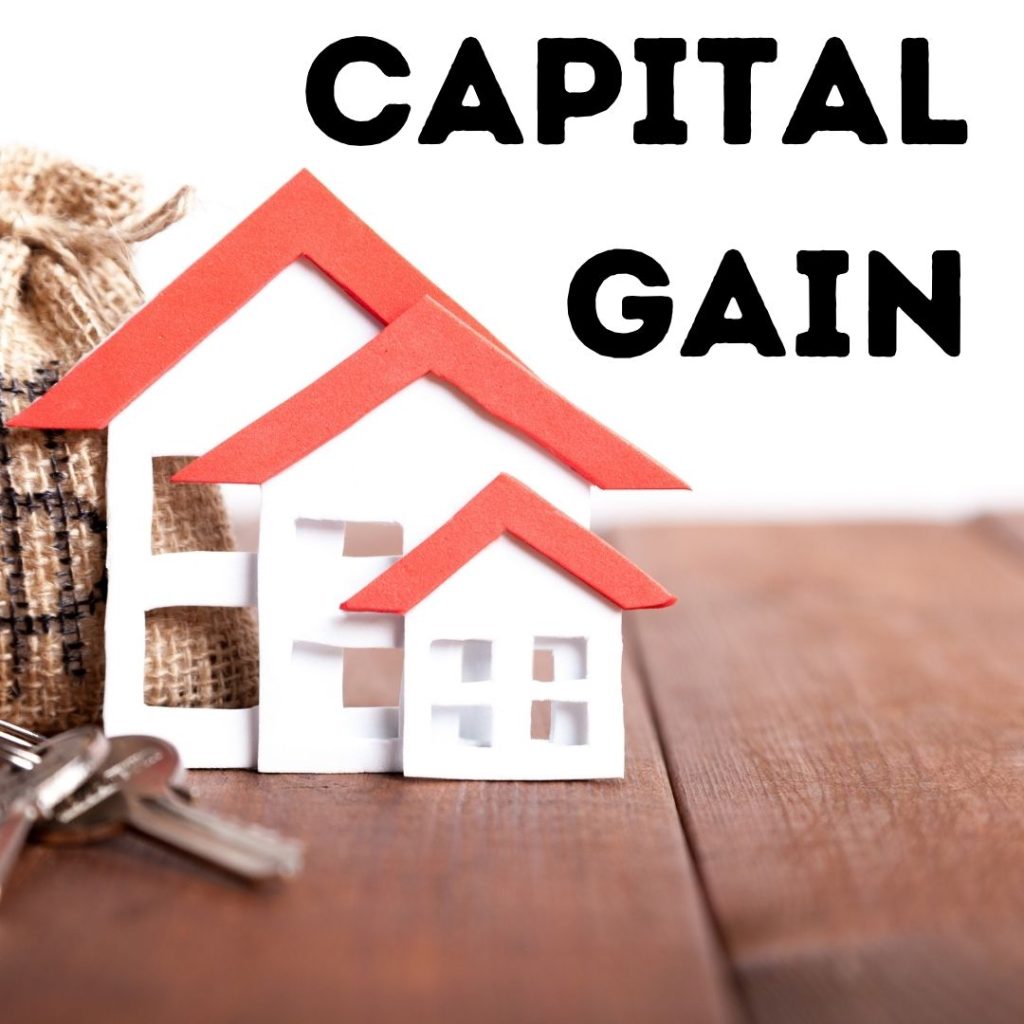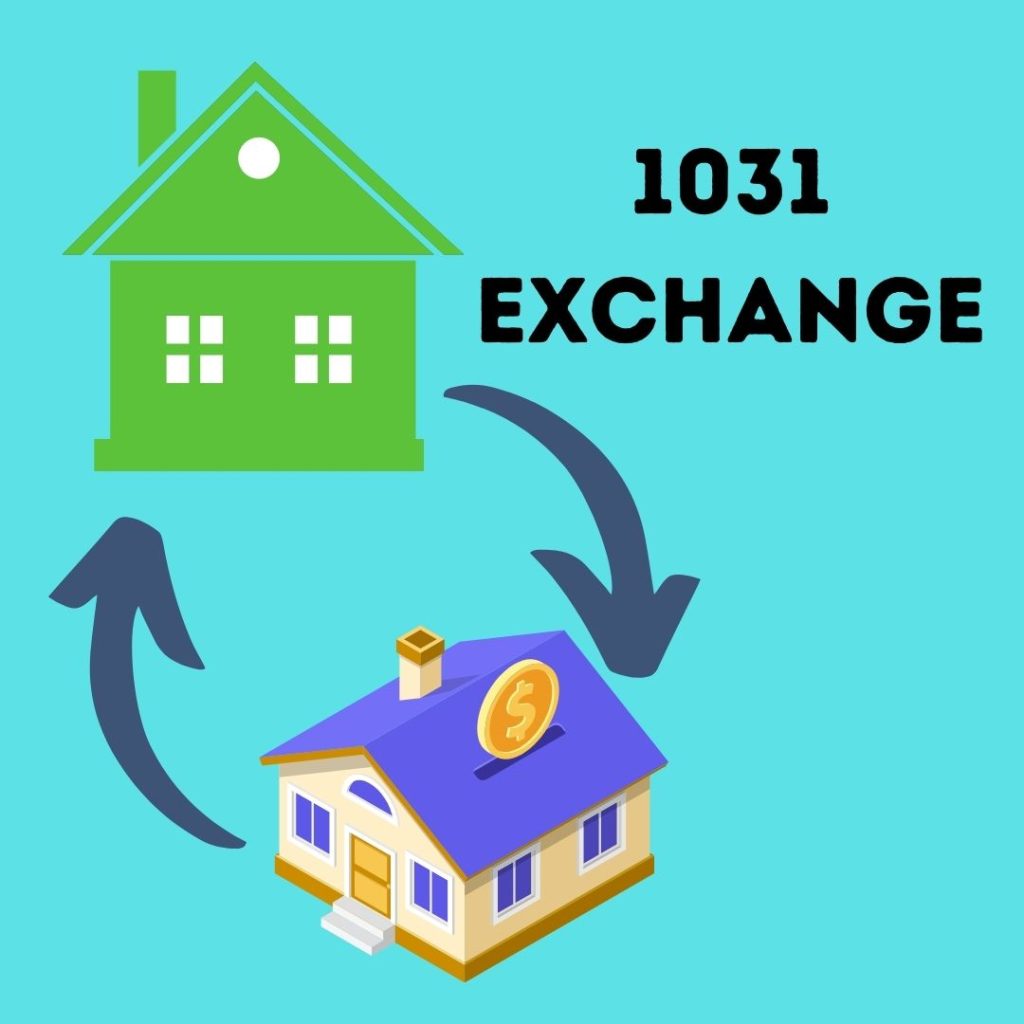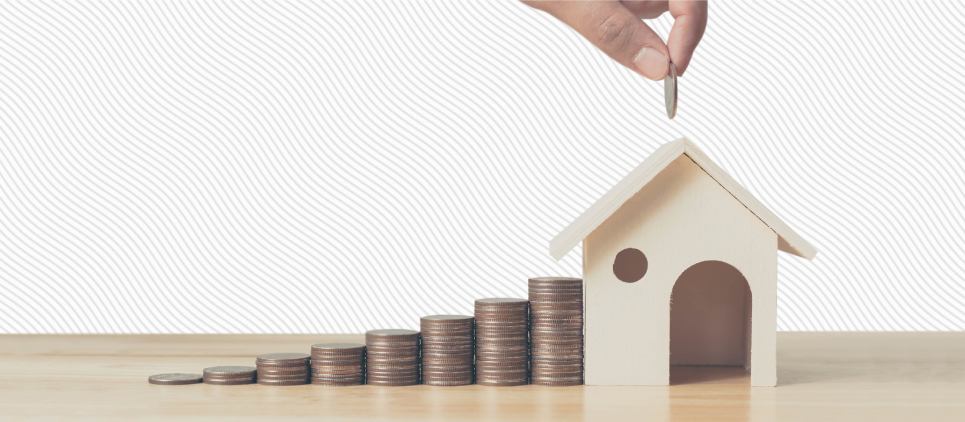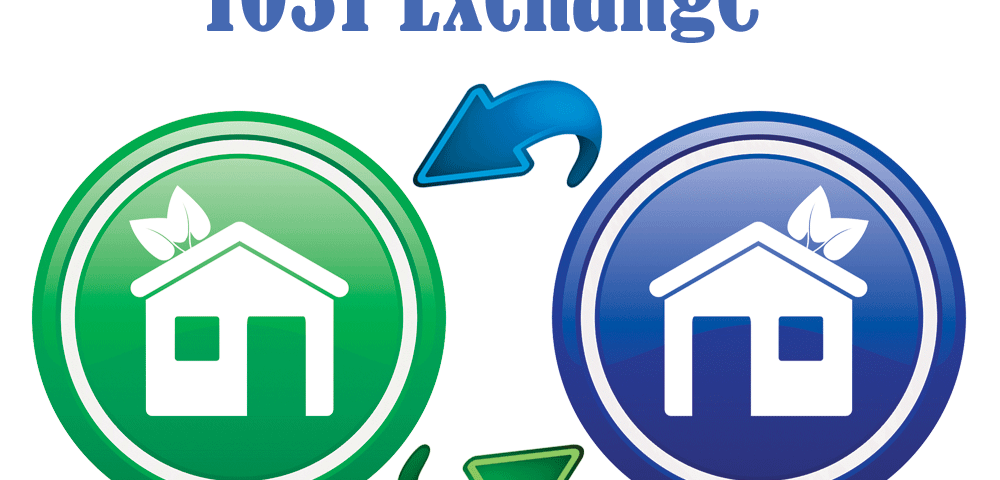How to use a 1031 Exchange to Scale your Real Estate Portfolio?

How to Accumulate Property Fast?
February 10, 2022
How Does Real Estate Investment Compare to Investing in Stocks or Crypto
September 14, 2022If you’re a real estate investor looking to grow your real estate rental or investment property portfolio, you may want to consider using the 1031 exchange program offered by the Internal Revenue Service (IRS). Typically, growth in the real estate sector is driven by investors that do the following: buy a property at a low price, hold onto it for a certain time period, to then resell the property at a higher price, using the proceeds to buy another property and repeat the entire process. It’s a cycle that has made entrepreneurs millions. And within the industry, the more cash you have on hand the more you’re able to borrow, and the better assets you can purchase.
The only roadblock with most real estate transactions, at least where an investor or non-homeowner is involved, is the profit generated that is generated on sales like these is taxed at extremely high rates. These tax rates are so high in fact that in certain states, an investor can sell their property and walk away with only a third of what they should get all because the rest had to be paid to state and federal taxes.
Fortunately, there is a range of alternatives available to real estate owners who desire to expand their real estate asset portfolio, without paying up to Uncle Sam. They can explore setting up a Delaware Statutory Trust (DSTs), arranging private financing, or simply taking the time to accumulate their cash savings. The savviest of investors, however, will usually take advantage of a 1031 exchange as it is the most aggressive approach to saving money.
In this article, we’ll discuss what the 1031 exchange process is, how it works, and how it’s one of the best strategies to scale your real estate portfolio. Additionally, we’ll discuss the benefits and pitfalls that will be important for you to look out for.

What is a Capital Gain
foundations: capital gain. Capital gain is the profit that is generated from selling any capital asset. Specifically, the IRS defines a capital asset as anything that is not considered to be standard business inventory or equipment, for example, stocks, bonds, art, and real estate.
In order to calculate the capital gain, you take the final sales prices and subtract out the cost to purchase and hold the asset. For example, if you bought a duplex seven years ago for $500,000, and put $100,000 worth of work into it, to resell it this year for $1,250,000 then you’d be facing a capital gain of $650,000.
The reason why capital gain is such a key concept is that it forms the basis of the capital gains tax. There are two capital gains tax rates. One for short-term capital gains, which is a tax rate equivalent to what the average employee is taxed on their paycheck. And the other is for long-term capital gains, which are earned after you sell an asset that you’ve been holding onto for over a year. The latter provides the lowest levels.
What is a 1031 Exchange?
The goal of the 1031 exchange is to defer any capital gains once a property is sold. Per Section 1031 of the U.S. Internal Revenue Code, which outlines all of the tax rules for the entire country, a 1031 exchange is a tax program that allows you to avoid paying taxes on your capital gains taxes when you sell a real estate asset that you don’t own in your own name.
Also known as a “like-kind” exchange, a 1031 exchange recognizes that if a property being sold is similar to the one being purchased, the seller should be able to kick those funds and their potential tax bill further out into the future. You are essentially trading one property for another. You can use the proceeds from the sale of your original property to purchase your

How a 1031 Exchange Works
For the sake of this next paragraph, we’ll focus on how a delayed 1031 exchange works, as they are the most common. By knowing how to properly use a 1031 exchange, as a real estate investor, you’re able to unlock serious growth for yourself. The steps are as follows:
#1 – Find a Qualified Intermediary Company
The first step is to find a qualified intermediary company. A qualified intermediary, or QI, is the company required to facilitate your 1031 exchange to make sure it stays tax compliant. In other words, they act as a middleman making sure that you follow all the rules, and they’ll be the ones receiving the proceeds from your real estate sale. This is critical because if at any point the property owner receives money from the sale, they are tax liable. The QI essentially then acts as an escrow, holding the funds on the seller’s behalf until they find the property that will be purchased.
#2 – Sell Your Property
The second step is to go ahead and sell your property. The reason why it’s best to sell your property after you’ve identified three replacement properties is because things very often change. With a 1031 exchange there are strict time limits, so if your property sells, but you haven’t decided what to buy next in time you’ll have to pay capital gains tax.
#3 – Submit Identification Papers
The third step of a 1031 exchange is to formally identify up to three properties you would like to buy, or what are also called your ‘replacement properties’. In a 1031 exchange, investors will be required within 45 calendar days of selling their ‘relinquished property’ to tell the IRS what real estate they intend to buy. This statement must include the full address for the property, as well as a description and fair market value or projected purchase price.
#4 – Close on a Replacement Property
Once you have identified your replacement properties, you have 180 days, or 6 months, to close on the sale of your new asset. The trick part is even if the three properties you named in step 3 are no longer available, or were sold to someone else, you cannot pick another three different properties, which is why strategy is critical when doing a 1031 exchange. At this stage, you’ll also need to file certain forms with the IRS.
Types of 1031 Exchanges
There are four major types of 1031 exchanges that real estate investors use the most, which we’ll outline below.
Delayed Exchange
The first and most common is the delayed exchange, where a real estate investor sells their asset, delays paying a capital gains, and purchases another within the timelines established under the Tax code. More specifically, with a delayed exchange, the funds of the sale go directly to a qualified intermediary. The process outlined above is how a typical delayed exchange would proceed.
As an example, let’s say Steve owns a $1,000,000 4 unit apartment building in California, but decides to sell it and move to Texas. With a delayed exchange, he’ll sell the property first, none of the money will go to him, but to his QI, and then he has 45 days to fly to Texas and identify up to three properties he’d potentially like to purchase. If he goes under contract on one of these, then within 180 days of the agreement, he can request the QI wire the funds in as the down payment, get a loan and close on it. The key element of a delayed exchange is there is a delay between one property being sold and the other being purchased.
Reverse Exchange
The second type of exchange is a reverse exchange. A reverse exchange is where a real estate investor finds their desired replacement property before selling their current property and wants to move on it immediately. Because the tax code does not allow an investor to own their relinquished and replacement property at the same time, in the case of a reverse exchange, the investor will have a QI, in this instance referred to as an Exchange Accommodation Titleholder, to take title to the property.
Using our example above, instead of selling his California building first, Steve could have his QI buy a replacement property in Texas first, and then return home and sell the relinquished property. The key thing to note with a reverse exchange is that the same timelines still apply with the 45 days to identify, and 180 days to close. Except in this case the close is on the relinquished property.
Simultaneous Exchange
The third type of exchange is called the simultaneous exchange, where the purchase of the replacement property and sale of the relinquished property occurs on the same day, making a clean trade. In this scenario, a real estate investor can literally time the sale and purchase to occur on the same day, reducing any holding time for their funds. Making it an ideal exchange for individuals looking to avoid the hidden cost of inflation when arranging a 1031 exchange. With a simultaneous exchange, a qualified intermediary will still be required to actually handle the funds. In general, these are much less common than the first two types of exchanges.
Improvement Exchange
Lastly, the fourth type of 1031 exchanges, and also less common, is the construction and improvement exchange. When a real estate investor decides to purchase a distressed property that is in need of repair, they can use this type of exchange to bring it up to standard before taking title to the property. Under this scenario, the real estate investor individual sells their original property, and identifies the replacement. During the 180 day period after the replacement property is under contract, the investor can then have all the necessary improvements done, and once completed can instruct the QI to close. Most unique to an improvement exchange is the proceeds from the previous sale that the QI is holding onto during that 180 day holding period, can actually be used towards
There are, however, a few requirements, such as the replacement property must remain substantially the same as it was before the construction. Meaning an investor would not be able to buy a home, and then tear it down and build an apartment building. They can only buy the home, and then renovate the interior bringing it back to life. Additionally, the replacement property must still be of the same greater price than the asset that was originally sold.
Overall, the best way to know which exchange is right for you depends on your local real estate market and the work, if any, required for the new property you’re looking to purchase.
Like-Kind Property is Key
In order to qualify for any type of 1031 exchange, the properties that are being relinquished and subsequently purchased must be considered “like-kind”. This essentially means that can only exchange properties that are classified as the same type. For example, you could exchange a residential property for another residential property, a hotel for another hotel, or a commercial property for another commercial property. You could not, however, exchange a residential property for a resort, no matter the price tag, nor could you exchange an apartment building for an office.
Additionally, a core foundation and rule of 1031 exchanges is the new property being purchased must be of the same or greater value than the one that was given up, and all the real estate must be located in the United States. To illustrate, Steve our real estate investor, would be able to sell his $1 million apartment building, to buy a $1.5 million apartment building in Texas. Even though they are different states, the properties themselves are still the same real estate asset type. He would not be able to buy a $900,000 apartment building, because a capital gain is implied which would defeat the whole purpose of the 1031 exchange and trigger taxes.

How 1031 Exchanges Help You Scale
Hopefully, as you’ve seen throughout this article there are many benefits to using a exchange. You can defer paying capital gains taxes essentially for your entire life, so long as you continue to do 1031 exchange after another after another. The biggest way 1031 exchanges enable you to scale your portfolio is the power of leverage that they allow you to unlock. Specifically, 1031 exchanges let you raise capital in a way that gives you access to bigger and better deals.
As an example, let’s say you’d like to sell your $1,000,000 rental home that you own free and clear and do a 1031 exchange. Let’s also assume that you would like to invest your money out of state where the average single-family residence sells for $400,000. Even with paying a 20% deposit, you could leverage the full million dollars of your sale to buy not just one, but up to 12 different properties in that area. Suddenly you have grown your real estate portfolio from a mere $1 million to $3.84 million (12 homes x $400,000 purchase price x 80% equity in each home).
If in 3 years, the price of all these homes were to increase in value, by let’s say 20% and are now each worth $480,000, your portfolio’s value just jumped to $4.8 million. And if you decide to go ahead and do another round of 1031 Exchanges, you can now use your increased equity to go out and buy another 12 – 24 homes of greater value, pushing your net worth up even more.
As these examples show, the multiplying effect of a 1031 exchange is what enables it to allow real estate investors to expand their real estate portfolios quickly.
Maximize your 1031 Exchange
While 1031 exchanges are an excellent tool for a real estate investor to have in their toolbox, there are certain best practices you’ll want to follow to ensure you maximize the benefits.
Firstly, you’ll want to identify your property even if you plan on doing a delayed exchange. Currently, we’re in a seller’s market, meaning competition for any real estate is high. Many real estate investors, actually get caught when they are unable to get a property under contract, and time is ticking.
You’ll additionally, want to document everything. Keeping good records of all transactions related to the exchange, and of all of your holding expenses for each property is critical to maximizing the dollar benefit you can achieve.
Lastly, you’ll want to avoid what is called ‘boot’ of any kind. ‘Boot’ is any unfair benefit you gain from a replacement property that the IRS could recognize as income and assess you a capital gains tax. Examples of boot include using a replacement property as a personal residence and charging less than market rents; receiving any kind of kickback in commission or money from the listing agent when selling your relinquished property; or receiving one penny from the proceeds when you sell.
By following these best practices, you avoid many of the snafus that can come when trying to use a 1031 exchange.

A 1031 Exchange is to Your Advantage
1031 exchanges remain one of the best strategies real estate investors can use to scale their investment property portfolios. It is also among the most simple available. So long as you follow the guidelines clearly laid out, and select the right exchange for you and your tax needs, you’re able to unlock access to deals that bump your net worth and the total value of your portfolio to new heights. If you need any help navigating getting a loan for 1031 exchange properties, give me a call at 9177404325.
Mortgage Rates
DSCR Mortgage: 7.375%
Commercial Mortgage: 7.5%
Single family, Condo Investment Property: 7.375%
Portfolio of Residential Homes: 7.5%
Calculate Your Monthly Payment
Mortgage Information
Monthly Payment
Principal and Interest: $0
Total Monthly Payment: $0


